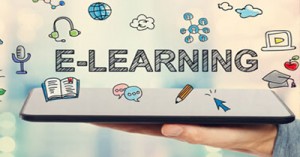Quality Area 7 focuses on effective leadership and governance of the service to establish and maintain quality environments for children’s learning and development.
Effective leaders establish shared values for the service that reflect the service context and professionalism and set a clear direction for the service’s continuous improvement. Governance refers to the systems in place to support effective management and operation of the service, consistent with the service’s statement of philosophy.
Each standard and element is represented by outcomes that contribute to the standard being achieved within the service. The following is a list of outcomes under each element within QA7, that can help services identify if they are achieving Quality Area 7. It also includes documentation to support each element. This list can be used as a guide for Self-Assessment purposes and the development of the Quality Improvement Plan.
7.1 – Governance supports the operation of a quality service.
7.1.1 - A statement of philosophy guides all aspects of the service’s operations.
This can be achieved by:
• the practices of the educational leader nominated supervisor, educators and co-ordinators are in line with the service’s statement of philosophy
• the values stated in the service philosophy being reflected in the service’s environment, policies and procedures
Documentation to support this includes:
• the service’s statement of philosophy
• documentation relating to the service’s review of its statement of philosophy (such as staff meeting minutes)
• evidence that the service’s statement of philosophy is included in the induction process for all staff members and in the enrolment and orientation process for families
7.1.2 – Systems are in place to manage risk and enable the effective management and operation of a quality service.
This can be achieved by:
• the facilities for storage of confidential records that are at the service or are immediately accessible by the service
• program information being shared in a way that respects the rights of children and families to privacy and confidentiality
Documentation to support this includes:
• records available and kept for the required length of time
• evidence of current public liability insurance (this does not apply if the
• insurance is provided by a state or territory government)
• a Quality Improvement Plan
• child assessments
• an incident, injury, trauma and illness record
• a medication record
• the child attendance record
• the child enrolment record
• the record of the death of a child while being educated and cared for by the service
• a record of the service’s compliance history
• a record of the responsible person in day-to-day charge
• the name of the person designated as the educational leader
• the nominated supervisor’s written consent to the nomination
• the record of volunteers and students
• staff records
• the names of responsible persons for each time that children are being educated and cared for by the service
• the record of educators working directly with children information displayed in staff areas about the required notifications
• records of notifications to the Regulatory Authority
• records held by the regulatory authority in relation to complaints against the service that allege a breach of legislation or a serious incident
• a documented grievance and complaints management procedure
• evidence that grievances and complaints are investigated and documented in a timely manner
• evidence that complaints lead to amendments to policies and procedures as required
• information for families on how complaints and grievances are made and how they are managed by the service.
7.1.3 - Roles and responsibilities are clearly defined, and understood, and support effective decision-making and operation of the service.
This can be achieved by:
• how responsibilities and expectations are communicated to all staff members
• educators’ understanding of the National Law and National Regulations, the National Quality Standard the Early Years Learning Framework and/or the Framework for School Age Care or any other approved learning framework implemented at the service
• the service’s statement of philosophy
• the service’s particular code of conduct and any code of ethics used to inform and evaluate practice (for example Early Childhood Australia’s Code of Ethics)
• with new staff members, their level of understanding of the philosophy of the service and the context in which it operates
• with staff members their experience of, and satisfaction with, the service’s induction process
• induction processes for all educators and staff, including relief educators
• the service’s approach to inducting new educators and developing their understanding of their roles and responsibilities as a family day care educator.
Documentation to support this includes:
• the service’s documented induction procedure
• information provided to all staff members about the service and their role, such as position descriptions
7.2 – Effective leadership builds and promotes a positive organisational culture and professional learning community.
7.2.1 - There is an effective self-assessment and quality improvement process in place.
This can be achieved by:
• regular self-assessment
• service practices and program delivery that match the service’s self- assessment, which is reflected in its Quality Improvement Plan
• program delivery with quality improvement planning
• collect and uses information from a range of sources as part of the process of self-assessment and planning for quality improvements
• using reflections on children’s learning and development to plan, implement and evaluate programs and to support children in achieving outcomes
• engaging in reflective practice on inclusion in the service’s Quality Improvement Plan
• how the educational leader supports educators to engage in reflective practice to refine strategies and to create and sustain improvements
• processes for regularly updating the Quality Improvement Plan and identifying new goals and strategies for quality improvement
• how the views and suggestions of educators, children and families are considered and used to inform the development and review of the service philosophy, quality improvement planning processes, including self-assessments
Documentation to support this includes:
• the service’s Quality Improvement Plan displayed so that families and staff can view the current goals and strategies for quality improvement
• the documented process for ongoing self-assessment, planning and review against the National Quality Standard
• systems for collecting information from families, children and staff members about their perceptions of the service
7.2.2 - The educational leader is supported and leads the development and implementation of the educational program and assessment and planning cycle.
This can be achieved by:
• the educational leader working with educators to build capacity and understanding about their pedagogy and practice, including ways they assess, reflect on and plan for children’s learning
• how the service supports the educational leader to have opportunities for discussions with educators, provide mentoring, lead reflective practice, and realise the intent of their role
• how the educational leader assists educators to promote children’s learning and development and, when necessary, facilitate discussions with families
• what strategies and processes the educational leader uses to lead the development of effective programs within the service and to ensure that the planning cycle is implemented effectively
• how the educational leader supports and builds educators’ understandings of how to assess, plan for and evaluate children’s learning, including supporting the development of documentation that is meaningful and relevant
• the ways that leadership is tailored and targeted to reflect individuals’ strengths and areas for growth
• how educators are mentored and supported through learning communities, positive organisational culture and professional conversations
• how the educational leader works with the service’s leadership and management structure to support educators through periods of change
• how the service supports the educational leader to have opportunities for discussions with educators, provide mentoring, lead reflective practice, and realise the intent of their role
• how the educational leader assists educators to promote children’s learning and development and, when necessary, facilitate discussions with families
• what strategies and processes the educational leader uses to lead the development of effective programs within the service and to ensure that the planning cycle is implemented effectively
• how the educational leader supports and builds educators’ understandings of how to assess, plan for and evaluate children’s learning, including supporting the development of documentation that is meaningful and relevant
• the ways that leadership is tailored and targeted to reflect individuals’ strengths and areas for growth
• how educators are mentored and supported through learning communities, positive organisational culture and professional conversations
• how the educational leader works with the service’s leadership and management structure to support educators through periods of change.
Documents to support this includes:
• designation of the educational leader in the staff record
• documentation of the educational leader providing feedback and guidance to educators about the assessment and planning cycle
• reflective practice discussions that critically examine current practice and that lead to quality improvement.
7.2.3 - Educators, co-ordinators and staff members’ performance is regularly evaluated and individual plans are in place to support learning and development.
This can be achieved by:
• processes to ensure each educational leader, co-ordinator, educator and staff member receives ongoing feedback about their performance and support to improve practice
• how the educational leader, co-ordinators, educators and staff members self-assess their performance and set individual performance and learning goals
• how performance processes identify strengths and areas for development, and how these areas for development are addressed
• how the service’s performance review process contributes to planning for educators’ learning and further development, and how the service supports this process
• how the effort, contribution and achievement of educators, educational leaders, co-ordinators and staff members are acknowledged and celebrated
• opportunities for educators to provide feedback about the effectiveness of the support provided by the coordination unit
Documents to support this includes:
• individual performance plans for educators, coordinators and staff members
• documented position descriptions for educators, educational leaders, coordinators
• and staff members that clearly outline the responsibilities of the position, clearly explain the approved provider’s expectations, are used as the basis for monitoring and reviewing the performance of educators, educational leaders, co-ordinators and staff members
• evidence of participation by educators, educational leaders, co-ordinators and staff members in professional development activities to update their knowledge and skills
• evidence that performance reviews for all educators, educational leaders, coordinators and staff members are conducted regularly and include a process for reviewing and updating professional development plans based on an evaluation of their professional strengths, interests and goals
Please note that this is to be used as a general guideline only. Please read the Guide To The NQS for more detailed information of what is required for each standard.
Reference:
New Guide To The National Quality Framework, Australian Children’s Education and Care Quality Authority.







 Here is the list of the EYLF Learning Outcomes that you can use as a guide or reference for your documentation and planning. The EYLF
Here is the list of the EYLF Learning Outcomes that you can use as a guide or reference for your documentation and planning. The EYLF The EYLF is a guide which consists of Principles, Practices and 5 main Learning Outcomes along with each of their sub outcomes, based on identity,
The EYLF is a guide which consists of Principles, Practices and 5 main Learning Outcomes along with each of their sub outcomes, based on identity, This is a guide on How to Write a Learning Story. It provides information on What Is A Learning Story, Writing A Learning Story, Sample
This is a guide on How to Write a Learning Story. It provides information on What Is A Learning Story, Writing A Learning Story, Sample One of the most important types of documentation methods that educators needs to be familiar with are “observations”. Observations are crucial for all early childhood
One of the most important types of documentation methods that educators needs to be familiar with are “observations”. Observations are crucial for all early childhood To support children achieve learning outcomes from the EYLF Framework, the following list gives educators examples of how to promote children's learning in each individual
To support children achieve learning outcomes from the EYLF Framework, the following list gives educators examples of how to promote children's learning in each individual Reflective practice is learning from everyday situations and issues and concerns that arise which form part of our daily routine while working in an early
Reflective practice is learning from everyday situations and issues and concerns that arise which form part of our daily routine while working in an early Within Australia, Programming and Planning is reflected and supported by the Early Years Learning Framework. Educators within early childhood settings, use the EYLF to guide
Within Australia, Programming and Planning is reflected and supported by the Early Years Learning Framework. Educators within early childhood settings, use the EYLF to guide When observing children, it's important that we use a range of different observation methods from running records, learning stories to photographs and work samples. Using
When observing children, it's important that we use a range of different observation methods from running records, learning stories to photographs and work samples. Using This is a guide for educators on what to observe under each sub learning outcome from the EYLF Framework, when a child is engaged in
This is a guide for educators on what to observe under each sub learning outcome from the EYLF Framework, when a child is engaged in The Early Years Learning Framework describes the curriculum as “all the interactions, experiences, activities, routines and events, planned and unplanned, that occur in an environment
The Early Years Learning Framework describes the curriculum as “all the interactions, experiences, activities, routines and events, planned and unplanned, that occur in an environment


